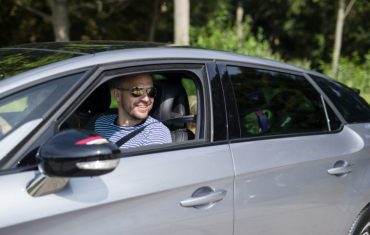
What’s the Operating Cost Method for FBT?
For your employeesCar Fringe Benefits Tax (FBT) can be calculated on a car lease in two different ways – statutory formula method or operating cost method. You can choose whichever method yields the lowest taxable value.
Statutory method is simple as it is a fixed 20% of the car’s value, less any days the car is unavailable. This method is very straightforward, needs no journey logs or odo records, and it doesn’t matter how many kilometres you drive each year.
This suits the vast majority of Australian novated lease holders.
But where there is a very high business use of your car, perhaps the Operating Cost Method (OCM) would be better.
OCM calculates percentage of private use and business use of a vehicle and may determine a lower FBT liability, but it can only be used where a logbook is maintained.
A logbook must be completed for 12 continuous weeks and updated every five years, or whenever the usage pattern changes significantly. The 12-week (minimum) period chosen should be representative of the car’s normal business use.
Does your fleet provider offer you a free electronic logbook for your FBT reporting?
Logbooks must record, as a minimum, the following:
• The dates on which the journey began and ended
• The odometer readings at the start and end of each journey
• Kilometres travelled
• The purpose of the journey, and
• Where there is more than one driver the logbook must record the drivers’ name

Guidelines for Completion of Logbooks
• Travel between home and the employee’s place of employment/business is classified as private travel.
• Travel from place of employment/business to an alternate place of business where the employee performs employment related duties (i.e. customer’s premises, store, warehouse, depot, branch office) is classified as business travel.
• Travel by an employee between home and normal place of employment/business where the employee adjusts their travel slightly to perform incidental tasks (i.e. picking up the mail or newspapers or collecting stationery or supplies) is classified as private travel.
• Employee travel between home and a place of employment/business (which is not their normal place of employment) in order to perform employment duties (i.e. customer’s premises, store, warehouse, depot, branch office etc.) is classified as business travel.
• Employees where the nature of their business or role is inherently itinerant, for example a Commercial Traveller or Service Technician who travels from their base of operation to various locations for work throughout the day, and then returns home over a continuing period. This travel would be classified as business travel. Typically, in these situations the employee may visit an employer’s office once a week for reporting, planning stock re-supply etc. In these circumstances this travel between home and the employer’s office would also be classified as business travel.
• Where an employer provides an employee with a car solely for the purposes of undertaking a business journey from the employee’s home the next morning, the trip home on the preceding night will be accepted as business travel, being incidental to the next morning’s journey. However, this approach is restricted to circumstances where this occurs infrequently or ad-hoc. This would be classified as private use where a person had regular use of the car for private purposes.
• Purpose of journey – When recording the purpose of the journey, an entry stating ‘business’ or ‘miscellaneous business’ will not be enough. Your entry should sufficiently describe the purpose of the journey so that it can be classified as a business journey.
Note:
The above guidelines apply to vehicles which are classified as a Car for FBT purposes. Typically, a Car is a motor car (including 4WDs) sedan/wagon, vans and utilities which have a carrying capacity less than 1000kg. Commercial vehicles with a carrying capacity of 1000kg or more or designed to carry more than 8 occupants and motor bikes are not a Car for FBT purposes so Car FBT does not apply. If these vehicles are used for Private purposes, different rules and a different FBT liability may apply.
 Driving Insights
Driving Insights




